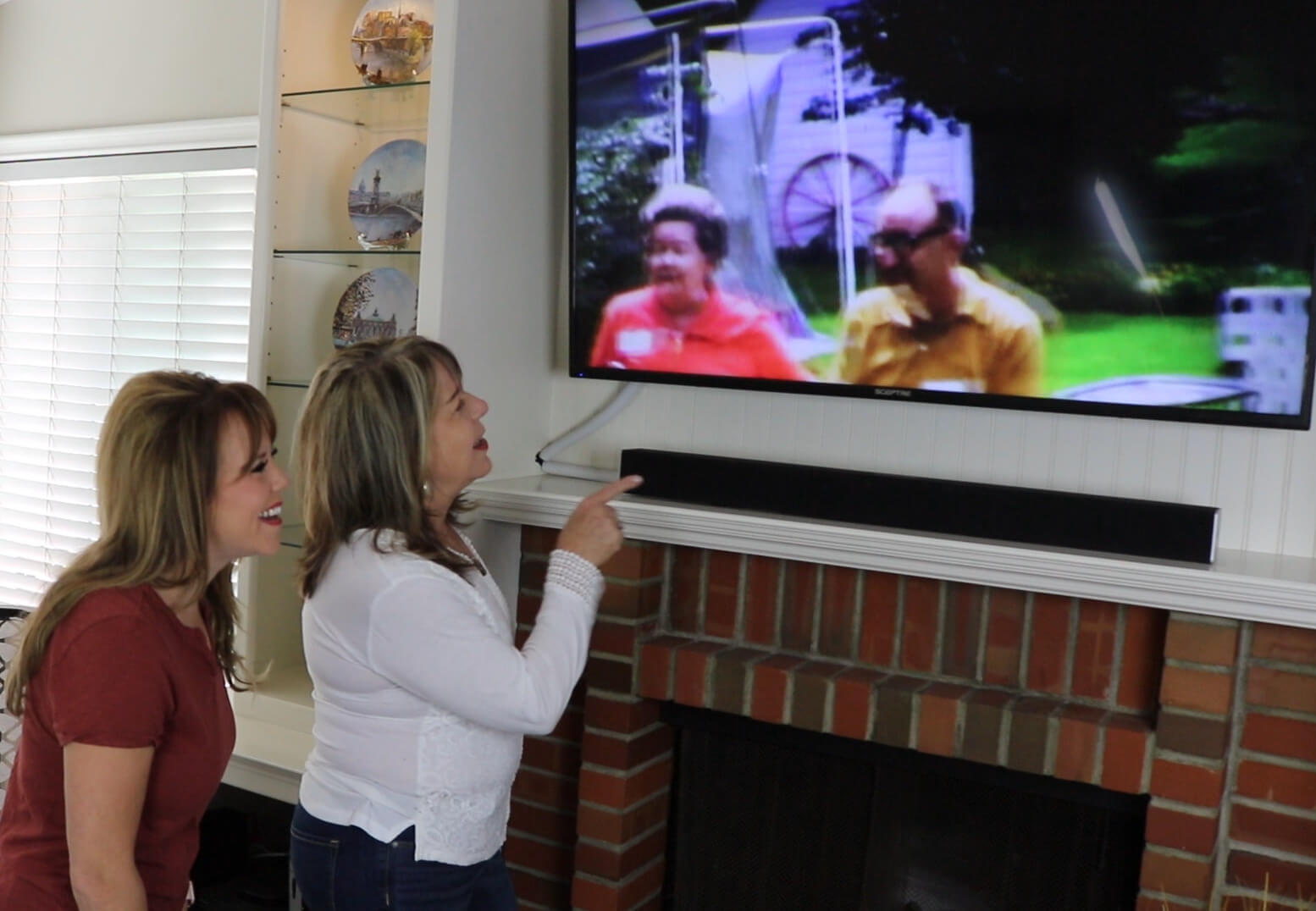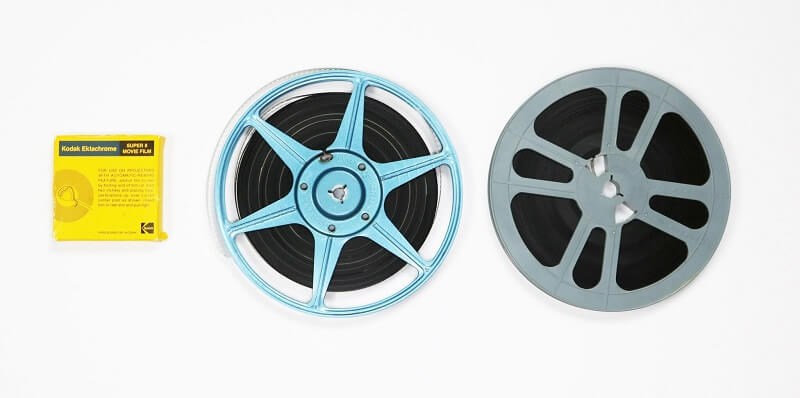FILM TRANSFERS
NO Projector, NO Screen, NO Problem
We convert 16mm, 8mm and Super8 film to digital. Watch and share on your choice of an easy cloud download, USB thumb drive or DVDs. You past memories are safely preserved for generations to come with our high-tech film transfer service.
We Care.

FILM TRANSFERS
$14.99 per 50 feet
Discounts for 200 and 400 foot reels

Our film transfer service handles your 16mm, 8mm and Super8 film. Our equipment captures your film in high definition. The colors and quality look almost brand new. You’ll receive back all of your original film along with your new digital copies delivered on your choice of DVDs, USB thumb drive or a cloud download. Your film memories are easy to watch and share.
We fix broken splices at no cost. Call or Contact Us.
Short History
35mm film was the standard for movie-making in the early 1900s. George Eastman invented and introduced the Kodak 16mm camera to the consumer market as a less expensive format than 35mm. The film was shot on film cameras and (processed) developed and projected on a screen to view.
During the great depression in 1932 Eastman Kodak released 8mm or regular8 film. In 1968 Kodak introduced Super8 film which allowed more image space to be shot as the sprocket holes were now smaller.
Today there is still an amazing amount of 16, 8mm, and super8 film that consumers haven’t transferred to digital. Films are becoming aged with time and are brittle and chemicals are weakening causing color loss. The time has come to convert film to digital.
Many of our clients who have either 16mm, 8mm, or super8 film come to The Video Editor Newport Beach when they realize that it is time to see what is on these reels. Some no doubt are being pressed by family memories to transfer or convert these potential gems so the family can see for themselves this little bit of history.
Whether the films were inherited or discovered in storage bins is irrelevant, it is time to convert them to a stable digital format that will last many additional lifetimes. The smell of ammonia comes from the chemicals on the film degrading. This breakdown is happening on several different levels. The integrity of the film is becoming brittle, perhaps warped, and not flexible. The other element disintegrating is the chemicals in the film causing color fading and drying out the base of the film. At this point, sprocket holes can become severed further complicating efforts to run the film in a projector. We have worked many miracles but no promises when the film is in bad condition. We have seen film canisters rusted shut, a harsh smell of decaying film, and brittle film that falls apart or warped so badly it won’t move through the projector.
Needless to say, a prompt response to transfer these films now before the effects of age and elements take over is necessary. Promptly look for a film transfer service that has the experience and positive reviews from actual customers.
Here at The Video Editor Newport Beach, California, we take ultimate care in handling your film to guarantee the best transfer results to digital.
Digital means the analog film images have been converted to zeros and ones and these digital numbers will no longer fade, become brittle, tear or break. In this digital domain, the movie is transferred to DVDs, a USB thumb drive, or a Google cloud link. This cloud link allows you to share the movies with anyone. They can watch anywhere there is internet connectivity or download and share the movie.
Another benefit besides being able to watch the films again and sharing with others is that they are digital if you choose you can edit them. Taking the best of the best and creating a new version. In editing, you can add music, brighten or darken a scene add more color, and many other options.
The Video Editor Newport Beach is local with a national reach. We have transferred film to video transfer for most customers in most states in the USA.
Prescreening the film to determine what reels to transfer is next to impossible. For starters, most film projectors are not working either missing belts or broken lamps or bulbs so bright it burns the film that is left. Yielding more damage to the troubled film.
We find that it is less expensive in the short term and long run to transfer everything or (as much as possible) to digital. You can edit or cut out footage later.
If trying to watch the film with damaged sprocket holes can become more pronounced further rendering the film useless. It is always best to dedicate this project to the pros with the experience, equipment, and time to bring them back to life again. You can thank us later for this wisdom.
Turnaround time is based on our current workload but typically one to two weeks. Many clients tell us they’d had these films stored for 40 years they can wait for another 1 to 2 weeks.
These are some of the procedures we follow here at The Video Editor when preparing to transfer the films. A visual inspection gives us an overview of the condition of that reel. Next would come cleaning the film to remove dust, dirt, and grim. Cleaning the film also loosens and adds flexibility allowing the film to follow the path of the projector threading.
We next adjust framing and overall brightness to the image, all of this including the capturing of the movies is done in real-time. Our trained operator is watching every frame of the film keeping it steady, focused, and optimized for the best quality possible.
Our high-definition camera capture unit is adjusted to the correct frame rate, steadiness, and more. If the film runs too fast it looks cartoonish and if the projector speed is too slow it will give a dragging slow-motion look that is unnatural.
Once all films have been captured, we rewind the reels and back up all the movie films to a cloud-based storage system (Google Drive) and films are transferred to a USB and or DVDs.
With all this information we hope we have conveyed the importance to transfer old film to digital as soon as possible. Time is not the film’s best friend.
If our staff can answer any questions for you, please call to get answers or an estimate.
